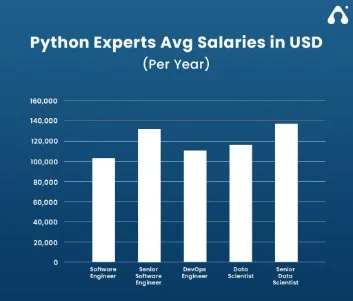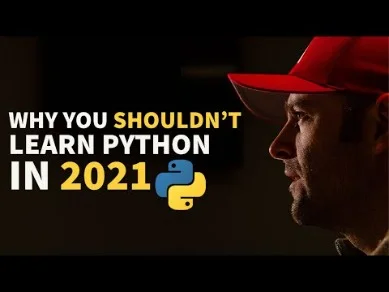Which Python Web Frameworkdjango Or Django
Content
It won’t take you through a complete end-to-end application, unlike some other framework tutorials, but it’s still useful. The docs come with handy notes on deployment in virtual hosts, reverse proxying via Apache and Nginx, and many other scenarios.
If a developer hasn’t packaged an app before, they’ll find themselves rudely surprised upon their first deploy. Projects with a large community like django-oscar are packaged and available on PyPi, but smaller projects on Github often to lack uniform packaging.
Django separates a project into individual applications, where Pyramid and Flask expect a project to be a single “application” with several views or models. It’s possible to replicate the project/app distinction in Flask and Pyramid, but the notion does not exist by default. Django and Pyramid both come with bootstrapping tools built in. Flask includes nothing of the sort because Flask’s target audience isn’t trying to build large MVC applications.
These mutations must later be found during a scan process that has a predictable and structured import phase. Module-localized mutation is actually the best-case circumstance for double-imports. This has the effect that double-registrations will never be performed. For example, do your templates always query models directly as is claimed in “note that the view gets its own data from the model”? My “controllers” tend to do this, massaging the data for easier use by the “view” .
Wafweb Application Firewall
For websites that have common needs, Django chooses very sane defaults and because of this it has actually become a prominent choice for mid- to large-sized web applications. Thankfully, all 3 challengers provide a simple means to fill in HTML with custom info, and let folks enjoy your swanky Bootstrap frontend. The developers and project managers in Svitla Systems have many Python frameworks, as well as front-end development, backend development, and full-stack capabilities. We have done more than one hundred projects in this area and we will choose and implement the optimal solution for you. Thanks to this, the community develops hundreds of universal modules and applications. The framework must support backward compatibility, so it is developing relatively slowly compared to the new frameworks.

BottlePy won’t be the best choice for medium-sized or bigger projects, as it would require some work to get to the point where heavier frameworks start. Due to its small size and no external dependencies required, it can be a good choice for beginners who want to start learning web development. If you’re building an application based on a robust CMS, Django might be the best pick because it will allow you to create a prototype quickly and develop it into a fully functional service. Whenever you begin a project, it’s a good idea to write down the architecture properly and define your assumptions about its development. Another significant advantage of Django is its comprehensive documentation.
Common Web Framework Functionality
Larger frameworks tend to have a feature set that supports a “typical” web application. It can be used for small apps as we’ve seen here, but it also powers big-name sites like Dropbox. One of the most common complaints about Pyramid is that it presents so many options it can be intimidating to start a new project. The query syntax to retrieve all the lunches is familiar from Flask because both demo applications use the popular SQLAlchemy ORM to provide persistent storage. In Pyramid lets you return your template’s context dictionary directly instead of needing to call a special render function. The @view_config decorator automatically passes the returned context to the template to be rendered.

The application will be a simple interface that allows users to post what they had for lunch and to see a list of what other users ate. Pyramid is intended for bigger and more complex applications than Flask. Because of this, its bootstrapping tool creates a bigger skeleton project. It also throws in basic configuration files, an example template, and the files to package your application for uploading to the Python Package Index. For projects that need more separation between components, Flask hasblueprints. For example, you could structure your Flask app with all user-related functions in users.py and your sales-related functions inecommerce.py, then import them and add them to your app in site.py.
If you are a new developer, you are probably keen on great support from the community and this may inform your choice of framework. By default Django only includes empty model and template files, so a new user sees a bit less example code to start out. It also leaves the choice of how to distribute their application to the developer. Web frameworks encapsulate what developers have learned over the past twenty years while programming sites and applications for the web. Frameworks make it easier to reuse code for common HTTP operations and to structure projects so other developers with knowledge of the framework can quickly build and maintain the application. By default, Pyramid includes several items that are common in web apps, but they’re provided as components to be stitched together, not as full-blown solutions.
#4 Web2py Python Web Framework
API. It just tells people to import a WSGI server and use it to serve up their Pyramid application as per the documentation of that WSGI server. This is a generic mode of operation that is encouraged in the Pyramid documentation. If you never expect your application to grow beyond two or three or four or ten modules, it probably doesn’t matter very much which mode you use. If your application grows large, however, imperative configuration can provide better predictability.
There is a minmal amount of ‘magic’ going on under the hood. I’d you’re not going to use the ORM or the template engine, you shouldn’t use Django. Or should i go with the django fork django-norel with django mongodb engine or should i use Pyramid because i plan to use jinja2 as my template layer so that makes 2 parts of django useless to me. Pyramid has over 1200 pages of documentation , covering topics from the very basic to the most advanced. Making them separate allows us to influence the docstrings of the exception classes to provide Pyramid-specific documentation.
Being able to skip calling the render method makes functions written for Pyramid views easier to test, since the data they return isn’t obscured in a template renderer object. Study open source examples built with your framework of choice so you can take parts of those projects and reuse the code in your application.
Instead of going over the same examples, let’s look at the places that Jinja2 is more expressive than Django templating. Flask’s Hello World app has to be the simplest out there, clocking in at a puny 7 lines of code in a single Python file. Flask, the youngest of the three frameworks, started in mid-2010. The Pyramid framework began life in the Pylons project and got the name Pyramid in late 2010, though the first release was in 2005.

Though Flask has a shorter history, it has been able to learn from frameworks that have come before and has set its sights firmly on small projects. It is clearly used most often in smaller projects with just one or two functions. One such project is httpbin, a simple helper for debugging and testing HTTP libraries. Django includes an ORM out of the box, while Pyramid and Flask leave it to the developer to choose how they want their data stored. The most popular ORM for non-Django web applications is SQLAlchemy by far, but there are plenty of other options from DynamoDB andMongoDB to simple local persistence like LevelDB or plainSQLite.
Compare Flask And Pyramid
The API will be used to save form data in an Oracle database. In python, there are so many frameworks to develop REST APIs. Django, Flask, and Pyramid are frameworks for web development in Python. Web2py is an open-source web application development framework written in the Python programming language. Web2py allows web developers to create dynamic sites using Python. Web2py aims to reduce the routine of web development processes, such as writing web forms from scratch, although a developer can develop a form from scratch if necessary. Large REST APIs often require a large number of requests to get all the necessary data.
- That’s why it allows to quickly create a functional application we can gradually improve and develop.
- Thanks to this, the community develops hundreds of universal modules and applications.
- It can be a good choice for programmers who want to migrate from Ruby or for ones that are bored with Django but are looking for another big and feature-rich framework.
Django’s batteries included approach bypasses a lot of common development pain points. Then when you’ve tested an idea and know what you want to do and what you need, you can switch to Flask and customize your environment with exactly the components and support your application needs. Django’s nature encourages large applications, in which both backend and frontend functionality depends on the Django ORM. All components get deployed together. If you’re determined to build your product using a Microservices architecture that separates monolithic apps into smaller self-containing apps, Django might not be the best choice. In web development there is never going to be a ‘one size fits all’ solution for every project. Both of these frameworks offer a different set of advantages and use-cases, which we’ll explore in this post. Read on to discover which framework is the better choice for your project, and why.
The Python code looks much the same except that we don’t need to explicitly call a render_template function. Just having a Python application that can respond to HTTP requests is a great start, but it’s a good bet that most of your users won’t be interested in using curl to interact with your web app. Fortunately, all three contenders provide an easy way to fill in HTML with custom info, and let folks enjoy your swanky Bootstrap frontend. To help make the choice between the three easier , we’ll build the same application in each framework and compare the code, highlighting the strengths and weaknesses of each approach. If you just want the code, skip straight to Frameworks in Action or view the code onGithub. Django templates also has a template inheritance feature, with the base template being inherited with a tag, exactly as is done with Jinja2.
Some people are uncomfortable with this notion, and believe it is wrong. Zope does not provide any mechanism except traversal to map code to URLs. This is mainly because Zope effectively requires use of ZODB, which is a hierarchical object store.
You’ll find that its toolset is slightly larger than the one provided in Flask, however, you still need to choose the ORM, template language, forms services, and others. Flask is a “microframework” primarily aimed at small applications with simpler needs. Pyramid and Django are both aimed at bigger applications, yet take different techniques to extensibility and adaptability. Pyramid targets flexibility and lets the developer utilize the right tools for their project. This implies the developer could select the database, URL structure, templating style, and more. Django aims to consist of all the batteries a web application will certainly need so programmers require only open the box and begin functioning, pulling in Django’s several components as they go. Pyramid is designed to work well with both small and large applications.